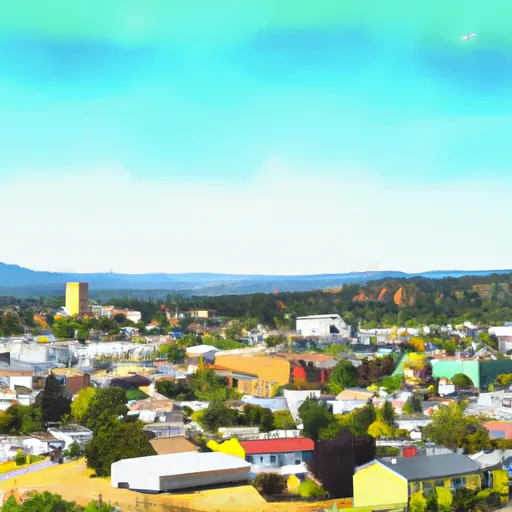-
 Snoflo Premium
Snoflo Premium
Get unlimited access to all our content
With no Ad interruptions! - Start Your Free Trial Login with existing account
Tehama
Eden Index
Climate
9.8
•
Recreation
3.4
•
Community
2.5
•
Safeguard
5.7/10

Tehama is a small town located in Tehama County, California, known for its picturesque landscapes and outdoor recreational opportunities. The climate in Tehama is characterized by hot, dry summers with temperatures averaging in the high 90s Fahrenheit, and mild, wet winters with temperatures averaging in the mid-50s. The region experiences minimal rainfall, with most precipitation occurring between November and March.
Hydrologically, Tehama is situated in the Sacramento Valley, known for its fertile soil and agricultural activities. The Sacramento River, one of California's longest rivers, flows nearby, providing a water source for the region. The river also offers opportunities for fishing, boating, and riverfront picnicking.
Outdoor recreation enthusiasts can explore the nearby Sacramento River Bend Area, which features diverse habitats, such as oak woodlands, grasslands, and riparian areas. The area offers hiking trails, bird-watching opportunities, and camping sites. Tehama also has several parks and open spaces, providing ample room for activities like picnicking, sports, and nature walks.
Overall, Tehama, California offers a warm climate, limited rainfall, access to the Sacramento River, and diverse outdoor recreational opportunities, making it an ideal destination for nature lovers and outdoor enthusiasts.
What is the Eden Index?
The Snoflo Eden Index serves as a comprehensive rating system for regions, evaluating their desirability through a holistic assessment of climate health, outdoor recreation opportunities, and natural disaster risk, acknowledging the profound impact of these factors on livability and well-being.
Climate Health Indicator (CHI): 9.8
Tehama receives approximately
623mm of rain per year,
with humidity levels near 61%
and air temperatures averaging around
17°C.
Tehama has a plant hardyness factor of
9, meaning
plants and agriculture in this region tend to thrive here all year round.
By considering the ideal temperature range, reliable water supplies, clean air, and stable seasonal rain or snowpacks, the Climate Health Indicator (CHI) underscores the significance of a healthy climate as the foundation for quality living.
A healthy climate is paramount for ensuring a high quality of life and livability in a region, fostering both physical well-being and environmental harmony. This can be characterized by ideal temperatures, reliable access to water supplies, clean air, and consistent seasonal rain or snowpacks.
Weather Forecast
Streamflow Conditions
Lower Sacramento
Area Rivers
Lower Sacramento
Snowpack Depths
Lower Sacramento
Reservoir Storage Capacity
Lower Sacramento
Groundwater Levels
Recreational Opportunity Index (ROI): 3.4
The Recreational Opportunity Index (ROI) recognizes the value of outdoor recreational options, such as parks, hiking trails, camping sites, and fishing spots, while acknowledging that climate plays a pivotal role in ensuring the comfort and consistency of these experiences.
Access to outdoor recreational opportunities, encompassing activities such as parks, hiking, camping, and fishing, is crucial for overall well-being, and the climate plays a pivotal role in enabling and enhancing these experiences, ensuring that individuals can engage in nature-based activities comfortably and consistently.
Camping Areas
| Campground | Campsites | Reservations | Toilets | Showers | Elevation |
|---|---|---|---|---|---|
| Sycamore Grove | 30 | 268 ft | |||
| Bidwell - Sacramento River State Park | None | 137 ft | |||
| Woodson Bridge State Rec Area | 41 | 178 ft |
Nearby Fishing
Nearby Ski Areas
Catastrophe Safeguard Index (CSI):
The Catastrophe Safeguard Index (CSI) recognizes that natural disaster risk, encompassing floods, fires, hurricanes, and tornadoes, can drastically affect safety and the overall appeal of an area.
The level of natural disaster risk in a region significantly affects safety and the overall livability, with climate change amplifying these risks by potentially increasing the frequency and intensity of events like floods, fires, hurricanes, and tornadoes, thereby posing substantial challenges to community resilience and well-being.
Community Resilience Indicator (CRI): 2.5
The Community Resilience Indicator (CRI) recognizes that education, healthcare, and socioeconomics are crucial to the well-being of a region. The CRI acknowledges the profound impact of these elements on residents' overall quality of life. By evaluating educational resources, healthcare accessibility, and economic inclusivity, the index captures the essential aspects that contribute to a thriving community, fostering resident satisfaction, equity, and social cohesion.

